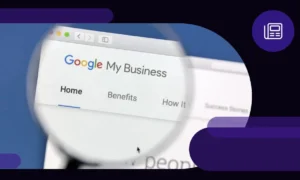New York native, Darien Dash, is a tech entrepreneur and innovator in the tech industry. He founded his first technology firm, DME Interactive Holdings, in 1994, and today he is the Managing Director of The Movement Management Advisors. In this interview, Darien shares the story of how he developed such an established career in the tech industry and how he challenged the digital divide. He will also disclose insight on how aspiring entrepreneurs can do the same.
Where did the idea for The Movement Management Advisors come from?
I started the company in 2015 with the goal of providing strategic advice to clients, pulling from my twenty years of experience. I have worked with a variety of clients in the past, including high-level athletes, executives, CEOs, and entertainers, to name a few. My job was to advise them in the capital market, banking, media, sports, entertainment, and cannabis industries, and I saw an opportunity to turn my expertise into a new venture.
20 years is a lot of time in the industry – Can you tell us what prompted you to first get started in tech?
It was during my senior year at USC. I read a book called Megatrends, which predicted wealth would be transferred from captains of industry to barons of technology. At the time, I had been working with my cousin, and we launched Roc-A-Bloc records, which had done very well. Despite that success, the concept in Megatrends resonated with me, and I felt compelled to pursue it and leave the records company behind. When I graduated school, I became the marketing and sales director for DMX, Digital Music Express, which at the time was the first cable service that distributed a separate set-top box that offered 30 channels of CD-quality music 24 hours a day.
What prompted you to start your own company?
I saw a gap in the business model we followed – At the time, I was not allowed to distribute the boxes to certain areas because of the demographics, which were mainly African-American and Hispanic markets. Corporate misconceptions held that these urban areas wouldn’t pay for our service and that the boxes would never be returned, but I knew that this was a missed opportunity.
After running the numbers, I recognized a nearly trillion-dollar market that was not being tapped – I estimated that the African-American market was worth $553 billion, while the Hispanic market represented an untapped $490 billion, so I decided to start my own company: DME Interactive Holdings.
It started with the simple mission to expand the hardware and infrastructure within minority companies, and over the years, the company expanded. I believe in digital equality, particularity for minorities; specifically, I believe that minorities deserve the same access to the internet and available technology as everyone else. This belief has remained the core of my professional growth and has allowed for the success of DME.
What other services did you expand into?
We started to develop a multitude of services, which included performing e-business services for small, mid-sized, and large corporations; we also developed a consumer-based program called Places of Color, through which we delivered low-cost PC solutions with internet access. Our access programs ranged from a free service up to a paid service that we offered in partnership with America Online and CompuServe.
At that time, connecting with consumers looked much different than it does today. What sales and marketing strategies did you use to help you grow?
Our goal was to be able to bring the product directly to the consumer, so we focused on developing relationships within the city, such as with the government body, school board, community-based organizations, and associations and congregations. We were targeting organizations that really impacted local households. Additionally, we received support from the local housing authorities in each of the markets that we targeted. Overall, our marketing was a combination of various tactics, including direct mail, door-to-door campaigning, and advertising.
We differed from most corporations in the technology sector at that time in that we really concentrated on marketing the message directly to the customers within the urban areas.
How did you fund your company?
We were self-financed for the first four and a half years. Some friends and family helped, but it was minimal. I lived off of the income from the contracts I had during those years.
Finally, in 1998, I did look for funding from venture capital firms; however, I received a lukewarm-to-cold reception for a couple of reasons: for one, the urban market was still not appreciated by most investors. For another, the concept of the digital divide – the gap in access to telecom tech between mainstream America and minorities – was barely recognized. A few of the venture capitalists that I spoke with were only valuing my company at around $5 million, but I felt it was worth more. We then looked at an IPO, but it was too expensive. Then, finally, we met with Mason Hill, an investment bank that wanted to take us public. They came up with the idea of a reverse merger. They paired us with Pride Automotive Group, which no longer wanted to be public. Pride Automotive was a car-leasing company and had nothing to do with us, but we wanted to gain their public status on the OTC. So as a by-product of the merger, in 2000, we became publicly traded.
Can you tell us more about the digital divide?
Of course – The digital divide is the idea that has prompted my business. It is a term that refers to the uneven distribution of and access to information and communication technologies. From my experience, it meant the inability of the African-American and Latino communities to gain access to the music I was distributing, and later, their inability to gain access to the internet.
What have you done to bring awareness to this concept?
In 1999, I actually worked with President Clinton, speaking out against cyber segregation on his “New Markets” tour. At the time, only 4 million African American in the US had uninterrupted access to technology in their household, compared to 41 million of white descent. My goal was to raise awareness and close the digital divide. In fact, I even testified before congress.
Previously, I have also served on the board of a group called Helping Educate, Activate, Volunteer and Empower via the Net, also known as HEAVEN. This was a non-profit that was dedicated to helping black teenagers in New York learn computer skills. Our goal at the time was to empower minorities through education, training, and job placement.
Also, in 2000, I partnered with two corporate executives to further grow our cause. First, I partnered with Carly Fiorina, the Hewlett-Packard CEO, to sell low cost computers with free internet access to minority residents in New York and New Jersey. Then, I partnered with American Online executive Ted Leonisis. Together, we launched Places of Color, a subsidiary of DME. We offered minorities a customized and less expensive version of AOL’s CompuServe 2000 software. We provided content, marketing, and advertising, while AOL provided the connections and oversaw the business aspects. The service featured thirty channels, e-mail, instant messaging, chat rooms, news, and entertainment through 150 affiliate content providers such as the National Urban League and the Black Health Network.
What other ventures have you engaged in since founding DME Interactive Holdings?
I have continued to focus on the tech industry with the goal of bringing my skills and knowledge to other companies. Since my time at DME Interactive Holdings, I have worked as Managing Director at Precient Acquisition Group, Partner at Pentagon Partners, and Director at 414 Media Advisors. Today, I am working as Managing Director at The Movement Management.
Building a tech company can be challenging, especially with today’s competition. However, you seem to have found great success in the sector over the years. What is one strategy that you feel has helped you grow your business?
Time has helped me. Every client that I have worked with and every company for which I have consulted has required a different strategy. This variation in clientele has taught me that the most effective ideas are those that grow over time, an understanding that has been very beneficial in constructing my ability to work with clients because our ideas are results of an organic, naturally evolving process.
In addition, I think that my mindset of putting the client first has really helped me grow my business. When dealing with the ever-changing world of technology, the client is the only constant. Therefore, being able to understand their needs in order to adopt a new strategy that best serves them is the key to success.
A lot of what you have done can be considered philanthropic – Has that helped you company grow?
I have focused on philanthropy as part of our business model. In the past, I focused on helping struggling communities by giving computers to inner-city schools. When we go in and give away product, we hope that the person will sign onto our service, find that it’s a quality service, and recommend it to a friend. This was especially true during the development of DME Holdings Interactive. It was necessary that we established a presence in the underserved communities. I didn’t then, nor do I now, believe in digital welfare, but I made a commitment to expand the hardware and software infrastructure within minority communities, and I had to do it no matter what. Thankfully, I found a way to monetize that mission.
Have there been any challenges that you have faced that stand out to you today?
My career as a tech entrepreneur has been filled with failures, which I believe are essential to building success, no matter what industry you work in – whether you are an entertainer, athlete, or executive. I have heard “no” thousands of times, but continuing moving forward with thick skin is essential. The biggest challenge is keeping the faith that you will succeed, and knowing this even if success takes longer than you anticipated.
What I tell others is to frame each failure as a stepping stone, and if you do this, then you will finally get to where you want to be.
Is there anything specific about your business model that has contributed to your success?
Yes. I believe that there are a few key concepts that I have focused on that have allowed me to continue to grow and develop my brand, even when there is such an abundance of competition. First, I would say that my commitment to developing a workflow has positively impacted my productivity as an entrepreneur. Many of the tasks that I complete on a daily basis are similar among clients, so streamlining the processes for these tasks has provided me more time to focus on the individual work with each client.
Secondly, I keep a close eye on my balance sheets and profit and loss statements – This is something that I have done since the beginning. Too often, as companies grow, people tend to leave this monitoring to someone else, which I believe can create a major hiccup in the development of a company and become a financial burden that can destroy the dreams of a tech entrepreneur.
Do you have any final words to tell to our audience, specifically the aspiring entrepreneurs?
Trees don’t grow in the sky. This is a phrase that I have adopted over the years and have come to use as my mantra. What I mean by it is that you can only harvest what you grow, so you must be continuously planting new seeds. When you accomplish a goal, plant a new seed. Don’t stop, or you won’t experience the growth you want.
Find Darien Dash on Twitter, and Facebook.

































